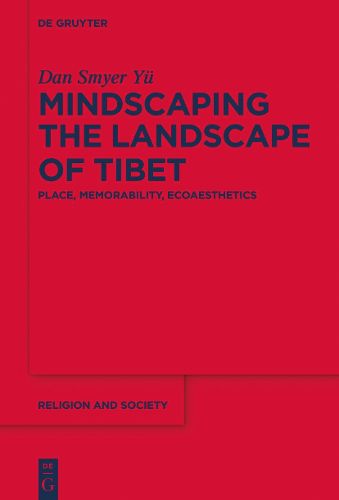Readings Newsletter
Become a Readings Member to make your shopping experience even easier.
Sign in or sign up for free!
You’re not far away from qualifying for FREE standard shipping within Australia
You’ve qualified for FREE standard shipping within Australia
The cart is loading…






Based on the author’s cross-regional fieldwork, archival findings, and critical reading of memoirs and creative works of Tibetans and Chinese, this book recounts how the potency of Tibet manifests itself in modern material culture concerning Tibet, which is interwoven with state ideology, politics of identity, imagination, nostalgia, forgetting, remembering, and earth-inspired transcendence. The physical place of Tibet is the antecedent point of contact for subsequent spiritual imaginations, acts of destruction and reconstruction, collective nostalgia, and delayed aesthetic and environmental awareness shown in the eco-religious acts of native Tibetans, Communist radical utopianism, former military officers’ recollections, Tibetan and Chinese artwork, and touristic consumption of the Tibetan landscape. By drawing connections between differences, dichotomies, and oppositions, this book explores the interiors of the diverse agentive modes of imaginations from which Tibet is imagined in China. On the theoretical front, this book attempts to bring forth a set of fresh perspectives on how a culturally and religiously specific landscape is antecedent to simultaneous processes of place-making, identity-making, and the bonding between place and people.
$9.00 standard shipping within Australia
FREE standard shipping within Australia for orders over $100.00
Express & International shipping calculated at checkout
Based on the author’s cross-regional fieldwork, archival findings, and critical reading of memoirs and creative works of Tibetans and Chinese, this book recounts how the potency of Tibet manifests itself in modern material culture concerning Tibet, which is interwoven with state ideology, politics of identity, imagination, nostalgia, forgetting, remembering, and earth-inspired transcendence. The physical place of Tibet is the antecedent point of contact for subsequent spiritual imaginations, acts of destruction and reconstruction, collective nostalgia, and delayed aesthetic and environmental awareness shown in the eco-religious acts of native Tibetans, Communist radical utopianism, former military officers’ recollections, Tibetan and Chinese artwork, and touristic consumption of the Tibetan landscape. By drawing connections between differences, dichotomies, and oppositions, this book explores the interiors of the diverse agentive modes of imaginations from which Tibet is imagined in China. On the theoretical front, this book attempts to bring forth a set of fresh perspectives on how a culturally and religiously specific landscape is antecedent to simultaneous processes of place-making, identity-making, and the bonding between place and people.